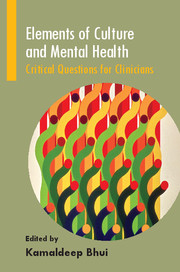Book contents
- Frontmatter
- Contents
- List of contributors
- Foreword: Desire and commitment: essential ingredients in learning about culture and mental illness
- 1 Is trauma-focused therapy helpful for survivors of war and conflict?
- 2 Will ethnopsychopharmacology lead to changes in clinical practice?
- 3 Does cognitive–behavioural therapy work for people with very different cultural orientations and backgrounds?
- 4 Can you do meaningful cognitive–behavioural therapy through an interpreter?
- 5 Are particular psychotherapeutic orientations indicated with specific ethnic minority groups?
- 6 Can psychotherapeutic interventions overcome epistemic difference?
- 7 On the role of culture and difference in evaluation, assessment and diagnosis
- 8 Necessary and sufficient competencies for intercultural work
- 9 On the validity and usefulness of existing Eurocentric diagnostic categories
- 10 Benefits and limitations of the cultural formulation in intercultural work
- 11 Barriers to the intercultural therapeutic relationship and how to overcome them
- 12 How does intercultural interpretation work in the mental health setting?
- 13 Do the power relations inherent in medical systems help or hinder in cross-cultural psychiatry?
- 14 Recovery and well-being: a paradigm for care
- 15 Social perspectives on diagnosis
- 16 Public mental health and inequalities
- 17 Can you do psychotherapy through an interpreter?
- 18 Can race and racism be acknowledged in the transference without it becoming a source of therapeutic impasse?
- 19 Cultural competence: models, measures and movements
- 20 Religion, spirituality and mental health
- Index
18 - Can race and racism be acknowledged in the transference without it becoming a source of therapeutic impasse?
Published online by Cambridge University Press: 01 January 2018
- Frontmatter
- Contents
- List of contributors
- Foreword: Desire and commitment: essential ingredients in learning about culture and mental illness
- 1 Is trauma-focused therapy helpful for survivors of war and conflict?
- 2 Will ethnopsychopharmacology lead to changes in clinical practice?
- 3 Does cognitive–behavioural therapy work for people with very different cultural orientations and backgrounds?
- 4 Can you do meaningful cognitive–behavioural therapy through an interpreter?
- 5 Are particular psychotherapeutic orientations indicated with specific ethnic minority groups?
- 6 Can psychotherapeutic interventions overcome epistemic difference?
- 7 On the role of culture and difference in evaluation, assessment and diagnosis
- 8 Necessary and sufficient competencies for intercultural work
- 9 On the validity and usefulness of existing Eurocentric diagnostic categories
- 10 Benefits and limitations of the cultural formulation in intercultural work
- 11 Barriers to the intercultural therapeutic relationship and how to overcome them
- 12 How does intercultural interpretation work in the mental health setting?
- 13 Do the power relations inherent in medical systems help or hinder in cross-cultural psychiatry?
- 14 Recovery and well-being: a paradigm for care
- 15 Social perspectives on diagnosis
- 16 Public mental health and inequalities
- 17 Can you do psychotherapy through an interpreter?
- 18 Can race and racism be acknowledged in the transference without it becoming a source of therapeutic impasse?
- 19 Cultural competence: models, measures and movements
- 20 Religion, spirituality and mental health
- Index
Summary
Racism has many definitions, some of which identify frank prejudice and verbal or physical hostility towards people with a different racial appearance. Some definitions emphasise the presence of negative and disadvantaging behaviours and attitudes towards the racial other, even among those considering themselves liberal and taking an anti-racist stance (Bhui, 2002; Primm, 2006). It is well established that, as a scientific construct, race does not determine how likely a person is to get a mental illness, and it does not really predict social, cultural or ethnic characteristics. Its importance lies mainly in the propensity for human populations to make use of a shorthand to describe and attempt to classify each other (often incorrectly) on the basis of appearance. It is also important because power, income and status appear to be patterned by race.
Given that in therapeutic settings, patient and therapist have many expectations of each other, race becomes one of numerous characteristics that both make use of in their initial encounter. Then it is taken up in the life of the consultation, assessment and treatment cycle, or it remains very silent, as if nothing to do with either person. This observation has been repeatedly made by clinicians and therapists for many decades. It has become known as the ‘silence of race’, carrying with it a quality of the repression or disavowal of an experience or set of historical group relations that would otherwise be troublesome (Young-Bruehl, 1998; Qureshi, 2007). When race does arise in a more explicit manner, it is difficult for therapist and patient to know how to take it up, given that it might lead to very different and deep-seated responses from either. When it is mentioned, it can be lightly touched upon and then overlooked or laughed off, perhaps disguising contempt or disgust, or shame or guilt, or some of those automatic thoughts and feelings that emerge in relationships. Fantasies of miscegenation, for example, are common (Calvo, 2008) in cross-racial encounters, and are often found at times of war and conflict, when inter-group (race, tribe, nation) relationships are attacked.
- Type
- Chapter
- Information
- Elements of Culture and Mental HealthCritical Questions for Clinicians, pp. 79 - 82Publisher: Royal College of PsychiatristsPrint publication year: 2013



